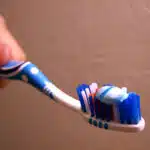Carpet stains can be a nightmare, especially when it comes to paint spills. Whether you are an artist or just someone who enjoys DIY projects, accidents can happen and your carpet may end up with stubborn paint marks. The good news is that there are easy and effective methods for removing paint from carpet without causing any further damage.
As a carpet cleaning expert, I have encountered many clients who struggle with paint stains on their carpets. Through years of experience and research, I have discovered two reliable methods that can help you get rid of paint stains in no time. These methods are safe for all types of carpets and do not require expensive equipment or professional help. In this article, I will share these techniques with you so that you can keep your carpets clean and beautiful without any hassle.
Identifying The Type Of Paint Stain
A paint stain on your carpet can be frustrating and overwhelming, but identifying the type of paint is crucial in removing it effectively. To begin, it’s important to understand that there are several types of paint commonly used today, including water-based acrylics, oil-based enamels, and latex paints. Each of these paints has unique properties that require different identifying techniques for successful removal.
One way to identify the type of paint stain is by examining its color and texture. Water-based acrylics are typically white or clear and have a smooth, creamy texture. Oil-based enamels are often glossy or shiny with a thick texture. Latex paints usually have a rubbery consistency with a matte finish. Identifying the color and texture of the paint will help determine which type of solvent or cleaner to use for removal.
Another method for identifying the type of paint is by reading the label or product information on the container. This information should provide specific instructions for cleaning up spills or stains caused by that particular product. If you no longer have access to the container, you can also try researching the brand and product online for more information about its composition and recommended cleaning methods.
By using these identifying techniques, you’ll be able to determine which type of paint has stained your carpet and prepare accordingly for its removal. The next step in removing paint from carpet involves preparing the area before beginning any cleaning process.
Preparing The Area
Vacuuming the area to be painted is a necessary step to ensure that dirt and debris do not become mixed in with the paint. Clear the area and cover the surrounding area with drop cloths to ensure that any spills are contained. When working with paint, it is important to wear gloves to protect hands from any potential skin irritations. Gather all necessary supplies before beginning the project for a smooth process. Open any nearby windows for ventilation to ensure a safe environment. For extra precaution, a mask should be worn when working with paint fumes.
Vacuum
Vacuuming is an essential part of preparing the area before attempting to remove paint from carpet. Using a vacuum is the first step in removing any loose or dry paint particles that are present on the surface of the carpet. This process ensures that these particles do not get pushed deeper into the carpet fibers during cleaning, making it more challenging to remove them entirely.
When using a vacuum, it’s crucial to use a clean attachment to avoid spreading any paint residue in other areas of the carpet. After vacuuming, you may notice some leftover paint stains on your carpet. In this case, blotting and soaking the stain with a mixture of warm water and dish soap can help remove any remaining paint residue.
Overall, using a vacuum to prepare your carpet before removing paint stains can be an effective way to ensure that all loose debris is removed from your carpets’ surface. This will make it easier for you to tackle any remaining stains with other methods without causing any damage or further spread of the stain throughout your carpets’ fibers. Remember always to use caution when dealing with cleaning chemicals and consider hiring professional cleaners if necessary.
Clear The Area
Vacuuming tips are essential when it comes to preparing an area for carpet cleaning. However, before starting the process of vacuuming, it is necessary to clear the area first. Preparing furniture and other objects in the room can prevent any damage or accidental spillage during the cleaning process. For example, removing any fragile or valuable items from the room can help avoid any accidents that may occur during the cleaning process.
It is also important to move any furniture that may be blocking or covering parts of the carpet that need attention. When you move your furniture, be sure to lift it rather than drag it across your carpet as dragging can cause damage to your carpets’ fibers. Once you have cleared and moved all objects within the area, you can start vacuuming and remove any loose debris on the surface of your carpet.
After clearing and vacuuming, if there are still stubborn stains present on your carpet, it’s time to use other methods to remove them effectively. You should never attempt to clean a stained carpet without adequate preparation as this can lead to further damage or spreading of the stain throughout your carpets’ fibers. By taking these precautionary steps before starting with carpet cleaning, you can ensure that your carpets remain in good condition while also making sure that they are thoroughly cleaned of paint stains or other stubborn marks.
Cover The Surrounding Area
Preventive measures are essential when it comes to preparing the area for carpet cleaning. One of these preventive measures is covering the surrounding area. Protective coverings should be placed on any surfaces that may be exposed to water, cleaning solutions, or other substances during the cleaning process. This includes furniture, walls, and floors.
Covering the surrounding area can prevent accidental spills, damage, or stains from occurring on surfaces other than the carpet being cleaned. It also makes cleanup easier and faster since there will be less surface area to clean up after the process is done. Protective coverings can vary depending on the type of surface being covered; plastic sheets or drop cloths are commonly used for furniture and floors while painters’ tape can protect baseboards and other trim.
In addition to using protective coverings, it’s important to ensure that all objects within the room have been removed or secured properly. Loose items such as toys, books, or decorative items can get in the way during the cleaning process and cause delays or accidents. By taking these precautionary steps before starting with carpet cleaning, you can ensure a smooth and effective process without any unnecessary interruptions or damages.
Blotting The Stain
After preparing the area, it’s time to tackle the paint stain on your carpet. Blotting techniques are the most effective way to remove paint from carpet fibers. Using a clean cloth or paper towel, blot at the stain gently. Avoid rubbing, as this can spread the paint further into the carpet and make it more difficult to remove.
Carpet friendly cleaning solutions can also aid in removing paint stains. Before using any cleaning solution, test it on an inconspicuous area of your carpet first to ensure that it doesn’t cause discoloration or damage to your carpet fibers. Once you have determined that the solution is safe for your carpet, apply a small amount of it onto the stain and let it sit for several minutes. Using a clean cloth or paper towel, blot at the stain until it disappears.
If blotting techniques and carpet friendly cleaning solutions don’t completely remove the paint stain from your carpet, don’t panic just yet. Using a soap and water solution may be necessary to completely eliminate the stain. In our next section, we will discuss how to create and apply a soap and water solution that will effectively remove any remaining paint residue without damaging your carpet fibers.
Using A Soap And Water Solution
One of the best ways to remove paint from carpet is by using a soap and water solution. This method is very effective, especially when the paint is still wet. The soap solution breaks down the paint and makes it easier to remove from the carpet fibers. Additionally, using soap solution has several benefits that make it a preferred method for many people.
Firstly, soap solutions are readily available and affordable. You don’t need to spend a lot of money on expensive cleaning products to get rid of paint stains on your carpet. All you need is some warm water, mild soap, and a sponge or cloth to clean the affected area. Secondly, using soap solution does not cause any damage to your carpet fibers. It is gentle enough not to weaken or discolor your carpet.
If you find that the soap solution method does not work for you, there are alternative cleaning methods that you can use to remove paint from your carpet. These include using rubbing alcohol or vinegar solutions. However, these methods may require more effort and time compared to using a simple soap and water solution.
To apply rubbing alcohol onto the affected area, follow these steps: 1. Blot the excess paint with a clean cloth or paper towel. Do not rub as this will spread the paint further into the carpet fibers.
Applying Rubbing Alcohol
Another effective method of removing paint from carpet is by using rubbing alcohol. This method works best for dried or old paint stains. Rubbing alcohol, also known as isopropyl alcohol, can be found in most drug stores and supermarkets. It is a potent solvent that can dissolve the paint particles and make them easier to remove.
To apply rubbing alcohol, you will need a clean cloth, a bowl of warm water, and rubbing alcohol. First, dampen the cloth with warm water and gently rub the affected area to remove any loose particles. Then pour some rubbing alcohol onto the cloth and rub it into the stain until it begins to lift off. Repeat this process until all of the paint has been removed.
While rubbing alcohol is generally safe to use on carpets, there are still potential risks associated with using this method. Alternative solutions such as vinegar or baking soda can be used if you are concerned about damaging your carpet or if you have allergies to rubbing alcohol. Also, avoid using too much pressure while scrubbing as it could damage the fibers of your carpet.
Using a paint remover is another effective way to get rid of stubborn paint stains on carpets which we will cover in the subsequent section.
Using A Paint Remover
When it comes to removing paint from carpet, using a paint remover can be an effective solution. There are several types of safe chemicals that can help dissolve the paint and make it easier to remove from the carpet fibers. It’s important to choose a paint remover that is safe for use on carpet and won’t cause any damage or discoloration.
DIY alternatives for paint removal include using rubbing alcohol, vinegar, or dish soap mixed with warm water. These methods may work for small spots of paint but may not be effective for larger areas or deep-set stains. It’s important to test a small area first before using any DIY solutions to ensure they won’t cause any damage to the carpet fibers.
While DIY solutions can be cost-effective, hiring a professional carpet cleaner may be the best option for larger areas or tougher stains. Professionals have access to specialized equipment and products that can effectively remove paint without causing further damage to the carpet. However, there are pros and cons of hiring a professional, such as the cost and potential risks of using harsh chemicals.
Before attempting any type of paint removal method on your carpet, it’s important to always test a small area first. This will help you avoid any unwanted damage or discoloration to your flooring. Once you’ve determined which method is best for your situation, proceed with caution and always follow instructions carefully.
Testing A Small Area First
After using a paint remover, it’s time to test a small area first before proceeding with the entire carpet. This is to avoid possible dangers that may arise from using harsh chemicals. It’s important to note that not all carpets are made equal; some may be more sensitive than others. By testing a small area first, you’ll be able to identify the right method for your carpet and avoid any further damage.
One alternative method for getting paint out of your carpet is by using dishwashing soap and warm water. Mix about one teaspoon of dishwashing soap with two cups of warm water, then dip a clean cloth into the solution and blot the paint stain gently. Repeat this process until the paint has been fully removed from the carpet. Rinse the area with clean water and let it dry thoroughly before walking on it.
Another alternative method is by using rubbing alcohol or vinegar mixed with warm water in equal parts. Dip a clean cloth into the solution and blot the paint stain gently until it disappears. Rinse the area with clean water and allow it to dry completely before walking on it again. Always remember to test a small area first before proceeding with either of these methods, as they can also have adverse effects on certain types of carpets.
To avoid harsh chemicals altogether, there are natural methods you can try such as baking soda or cornstarch mixed with water to make a paste. Apply this paste onto the paint stain, let it dry completely, then vacuum up any residue left behind. This method may take longer but is an effective way to remove paint stains without damaging your carpet fibers.
Avoiding Harsh Chemicals
When it comes to removing paint stains from carpet, there are several eco-friendly alternatives and natural cleaning solutions that can be used instead of harsh chemicals. These alternatives not only protect the environment, but also safeguard your health and the well-being of your loved ones.
One option is to use a mixture of vinegar and baking soda. Mix equal parts of vinegar and water in a spray bottle and apply it on the stained area. Let it sit for a few minutes before sprinkling baking soda on top. The mixture will start bubbling, which means it’s working to lift the paint stain. Use a soft-bristled brush to gently scrub the area, then rinse with water and blot dry with a clean cloth.
Another eco-friendly solution is using rubbing alcohol or vodka. Simply dampen a clean cloth with rubbing alcohol or vodka and blot the stain until it disappears. You may need to repeat this process several times depending on how deep the stain is.
In addition to these natural cleaning solutions, other eco-friendly alternatives include using cornstarch or dishwashing soap mixed with warm water. These are effective at lifting paint stains without causing any harm to your carpet or damaging its fibers. By using these natural methods, you can easily remove paint from your carpet without resorting to harsh chemicals that could potentially harm you or your family’s health.
To further assist in removing paint from your carpet, using a wet/dry vacuum can help extract stubborn stains from deep within the fibers of your carpet.
Using A Wet/Dry Vacuum
Did you know that an estimated 70-80% of households in the United States have carpets? With such a high percentage, it’s inevitable that spills and stains will happen. Paint spills on carpet can be particularly challenging to remove, but using a wet/dry vacuum can make the process much easier and more effective.
To begin, gather your materials: a wet/dry vacuum, carpet cleaning solution, and water. First, mix the cleaning solution with warm water according to the instructions on the bottle. Then, use the vacuum technique by placing the nozzle directly over the paint stain and turning on the machine. Move the nozzle back and forth over the stain until you see it start to lift.
Next, use the table below as a guide for how long to continue vacuuming based on how old or set in the paint stain is. It’s important to remember that using too much force or leaving the nozzle in one spot for too long can damage your carpet fibers.
| Age of Paint Stain | Vacuum Time |
|---|---|
| Fresh (within 24 hours) | 1-2 minutes |
| Set (more than 24 hours) | 3-5 minutes |
| Old (more than 48 hours) | 6-10 minutes |
Using a wet/dry vacuum is an effective way to remove paint from carpet without damaging it further. However, if there is still some residue left after following these steps, don’t worry! The next section will discuss how to use a clean cloth to tackle any remaining paint stains.
Using A Clean Cloth
To continue with our paint removal process, the next step is to use a clean cloth. This method is particularly useful when the paint stain on your carpet is still wet. You will need a clean cloth, warm water, and dish soap. Before you start cleaning, remove any excess paint from the carpet with a scraper or paper towel.
Next, pre-treatment methods can be used for tougher stains. These are ideal for removing dried-up paint stains that have been sitting in your carpet fibers for a while. For this method, you will need rubbing alcohol and a scraper. Pour rubbing alcohol onto the stain and let it sit for 10-15 minutes before using the scraper to gently remove the paint from your carpet.
Finally, if all else fails, you can consider alternative cleaning solutions such as vinegar or hydrogen peroxide. Mix equal parts of either solution with water and pour it onto the stain before blotting it up with a clean cloth. However, be sure to test these solutions on an inconspicuous area of your carpet first to ensure it doesn’t cause any discoloration or damage to your carpet fibers.
Remember that getting paint out of your carpet requires patience and persistence. Repeat the process until you’re satisfied with the results. With these easy methods and some determination, you’ll have your carpets looking good as new in no time!
Repeating The Process
It is important to note that while these methods may work for removing paint stains from carpet, prevention is always the best option. Here are a few tips for preventing carpet stains in the first place: avoid eating or drinking in carpeted areas, use doormats to trap dirt and mud before it enters your home, and remove shoes before entering the house. By taking these simple steps, you can significantly reduce your chances of having to deal with stubborn paint stains.
If you do find yourself dealing with a particularly stubborn paint stain, don’t panic. The key is to act quickly and follow the proper cleaning procedures. Start by using a scraper or spoon to remove any excess paint, then blot the area with a clean cloth or paper towel. Apply one of the methods outlined above (either using rubbing alcohol or dish soap and vinegar) and repeat until the stain is gone.
Once you have successfully removed the paint stain from your carpet, it’s important to let the area dry completely before using it again. This will prevent any mold or mildew growth and ensure that your carpet stays fresh and clean for as long as possible. In the next section, we will discuss some simple tips for drying out the affected area effectively without causing any further damage to your carpet fibers.
Drying The Area
- The first step in removing wet paint from carpet is to absorb any moisture present.
- This can be done with a combination of towels and a vacuum cleaner.
- Once the majority of the moisture has been absorbed, it is recommended to use fans to further dry the area.
- This will help to ensure that the paint is not left behind and the carpet is not damaged.
Absorb Moisture
In the process of drying the area where paint has been spilled on carpet, one of the most important steps is to absorb moisture. This step can greatly help in preventing further damage and spreading of the paint stain. Aside from that, it also reduces the amount of time needed for the carpet to completely dry. The benefits of absorbing moisture cannot be overstated as it can prevent mold growth and other bacteria from forming.
To effectively absorb moisture, there are several materials that can be used. One common material is paper towels or clean rags which are readily available in most households. These materials are effective in absorbing moisture but may not be enough for larger spills. For larger spills, a more effective moisture-absorbing material is necessary such as kitty litter or baking soda which can be spread over the affected area and left to sit for several hours before vacuuming.
In conclusion, absorbing moisture is a crucial step in drying an area where paint has been spilled on carpet. It prevents further damage and reduces drying time while also preventing potential mold growth and bacteria formation. Utilizing effective moisture-absorbing materials such as kitty litter or baking soda can help ensure successful removal of paint stains from carpets without damaging them further.
Use Fans
To effectively dry the area where paint has been spilled on carpet, it is important to utilize different methods such as absorbing moisture and using fans. The benefits of using fans cannot be understated as they can greatly help speed up the drying process and prevent further damage to the carpet. Fans work by circulating air around the affected area which helps evaporate any remaining moisture.
There are various types of fans that can be used for this purpose, with some being more effective than others. One of the best types of fans for drying carpets is an axial fan which produces high velocity airflow in a concentrated area. These fans are particularly effective in removing moisture from carpets as they are designed to move large amounts of air quickly, reducing drying time significantly.
In addition to axial fans, centrifugal fans can also be used but may not be as effective in removing moisture from carpets due to their design. Despite this, centrifugal fans can still be useful for drying large areas as they have a wider coverage area compared to axial fans. Overall, utilizing both absorbing materials and fans is crucial in effectively drying an area where paint has been spilled on carpet without causing further damage or issues such as mold growth.
Avoiding Scrubbing Or Rubbing Too Hard
Preventing damage when cleaning paint from carpet is crucial to avoid further harm to the fibers. One way to do this is by avoiding scrubbing or rubbing too hard. This can cause the paint to embed deeper into the fibers, making it harder to remove and causing permanent damage to your carpet.
Gentle cleaning is key when trying to remove paint from your carpet. Start by blotting the area with a clean, white cloth or paper towel. Use a gentle touch and avoid using colored cloths, as dye transfer may occur. You can also try using a plastic scraper or credit card to gently scrape away any excess paint before proceeding with cleaning.
Effective products and DIY solutions can also be utilized in removing paint stains on carpets. Avoid harsh chemicals that may damage or discolor your carpet fibers. Instead, use mild detergents mixed with warm water or vinegar solution for an effective DIY solution. Additionally, there are commercial stain removers specifically designed for carpets that you can purchase at your local hardware store.
To avoid further complications in removing paint stains on carpets, it’s important to know when it’s time to seek professional help. If the stain persists after trying out various methods, it’s best to consult professional cleaners who have expertise in handling different types of stains and fabric materials. They can provide guidance on how best to treat the stain without causing any additional damage to your carpet fibers.
Seeking Professional Help
Avoiding scrubbing or rubbing too hard is crucial when trying to remove paint stains from carpets. However, there are times when DIY methods simply won’t cut it. If you’ve tried everything and the stain remains stubbornly intact, it may be time to consider hiring professionals.
Hiring professionals may seem expensive, but it can save you a lot of time and effort in the long run. A professional carpet cleaner has access to specialized tools and cleaning solutions that can effectively remove even the toughest stains, including paint. Additionally, they have extensive knowledge on how to properly treat different types of carpets without causing damage.
When weighing the cost effectiveness of professional services versus DIY methods, consider the value of your time and the potential for further damage to your carpet. While DIY methods may appear cheaper upfront, a mistake could lead to costly repairs or replacement down the line. By hiring professionals, you’re not only ensuring a thorough and safe removal of the paint stain but also protecting your investment in your carpet.
Preventing future paint stains on your carpet is essential in maintaining its appearance and longevity. In addition to avoiding scrubbing or rubbing too hard during removal attempts, be mindful of where you place paint cans and other materials when working on home improvement projects. Always use drop cloths or tarps to protect your flooring from accidental spills or splatters. By taking preventative measures, you can avoid future headaches and prolong the life of your carpet.
Preventing Future Paint Stains
Preventive measures are an essential aspect of maintaining a clean carpet, especially after removing paint stains. Accidents can happen at any time, and it is better to be prepared than to regret the consequences. One way to prevent future paint stains is by placing a drop cloth or plastic sheet on top of the carpet before starting any painting project. This will ensure that any accidental spills or drips do not damage the carpet.
Another preventive measure is to use painter’s tape around the edges of the carpet before painting. Painter’s tape acts as a barrier between the carpet and paint, preventing any unwanted stains from seeping into the fibers. Once you have completed your painting project, remove the tape immediately to avoid leaving behind any sticky residue.
DIY carpet cleaning products are also an effective way of preventing future paint stains. For instance, vinegar and baking soda are natural cleaning agents that help remove tough stains and odors from carpets. Simply mix equal parts of vinegar and water in a spray bottle, and apply it to the affected area. Afterward, sprinkle baking soda over the same area and let it sit for 15-20 minutes before vacuuming.
By implementing these preventive measures and using DIY carpet cleaning products, you can keep your carpets looking clean and fresh for longer periods. Remember always to act quickly when spills occur and avoid rubbing or scrubbing too hard as this can damage your carpet fibers. With these tips in mind, you can maintain a beautiful home with pristine carpets that look as good as new!
Conclusion
When dealing with paint stains on your carpet, it is crucial to identify the type of paint and take necessary precautions before attempting to remove it. Two effective methods for removing paint from carpet include using a soap and water solution or rubbing alcohol. It is important to avoid scrubbing or rubbing too hard as this can damage the fibers of the carpet.
Seeking professional help may be necessary if the paint stain is particularly stubborn or if attempts at removal have been unsuccessful. Preventing future paint stains can be achieved by taking preventative measures such as covering carpets during painting projects or using drop cloths.
Removing paint stains from carpets can be challenging but with patience and the right techniques, it can be accomplished successfully. As a carpet cleaning expert, I recommend treating each stain with care and attention as if it were a delicate piece of fabric. A paint stain on a carpet is like a blemish on one’s face; just as we would take special care when trying to remove a blemish, we must also handle paint stains with delicacy and precision. By following proper techniques and taking preventative measures, we can ensure our carpets remain clean and free of unwanted blemishes.
Image Credits
- “03dec31 Pussy on carpet” by xjyxjy (featured)





























